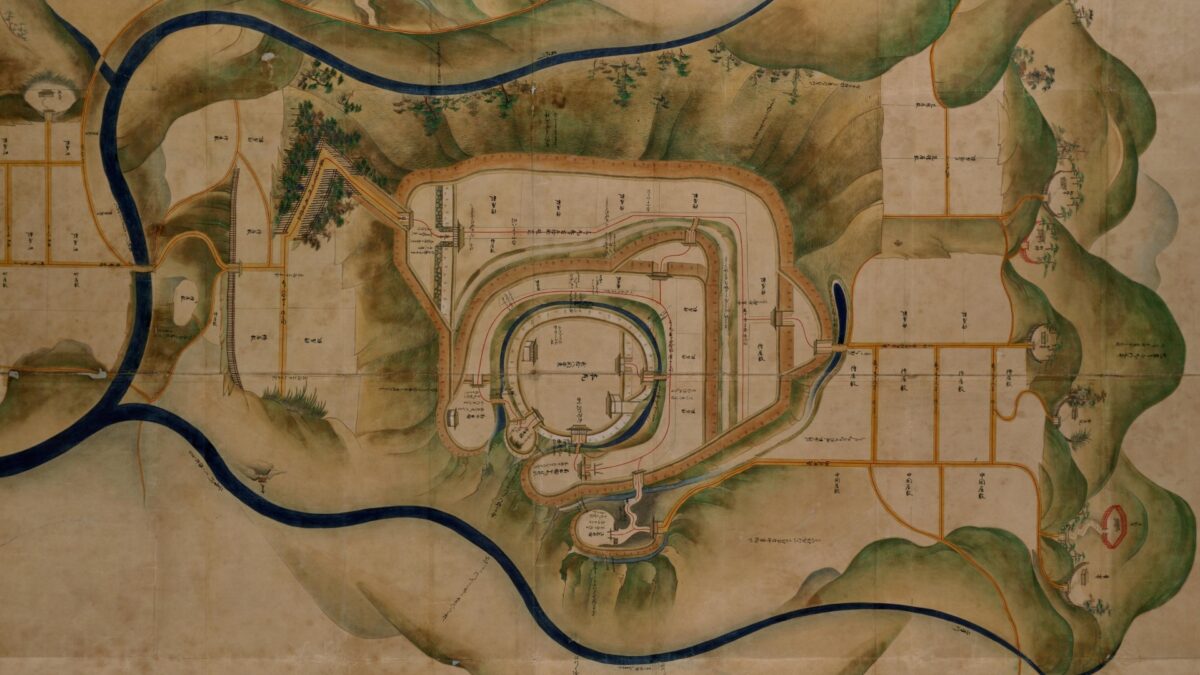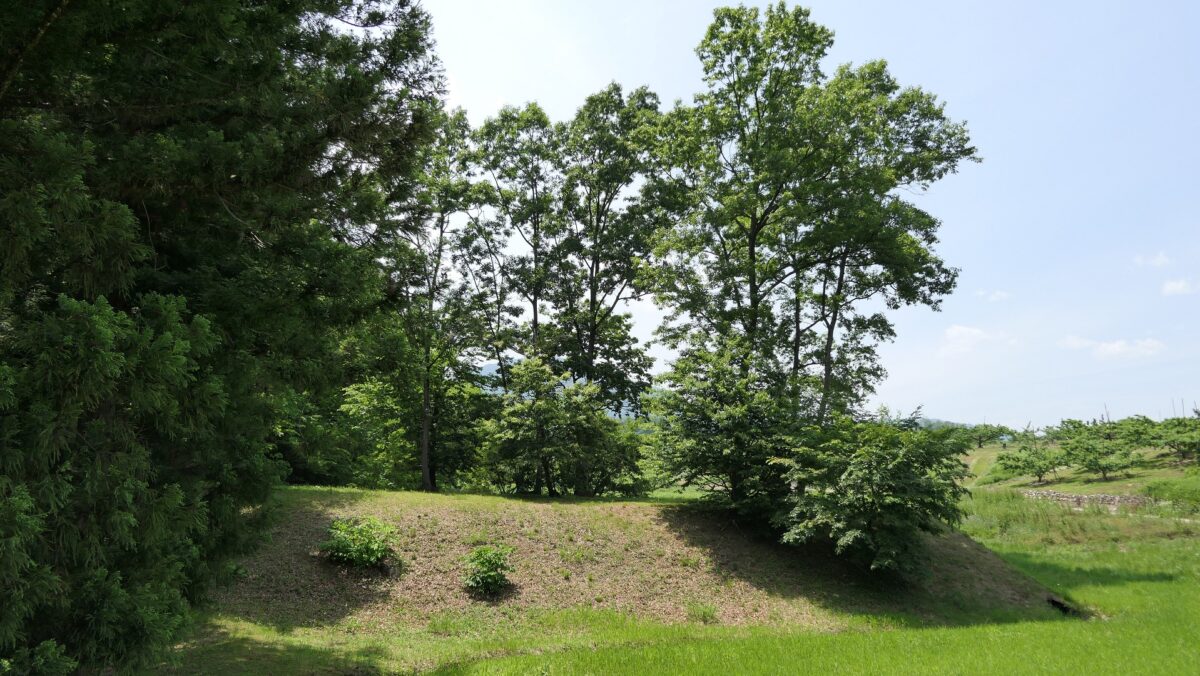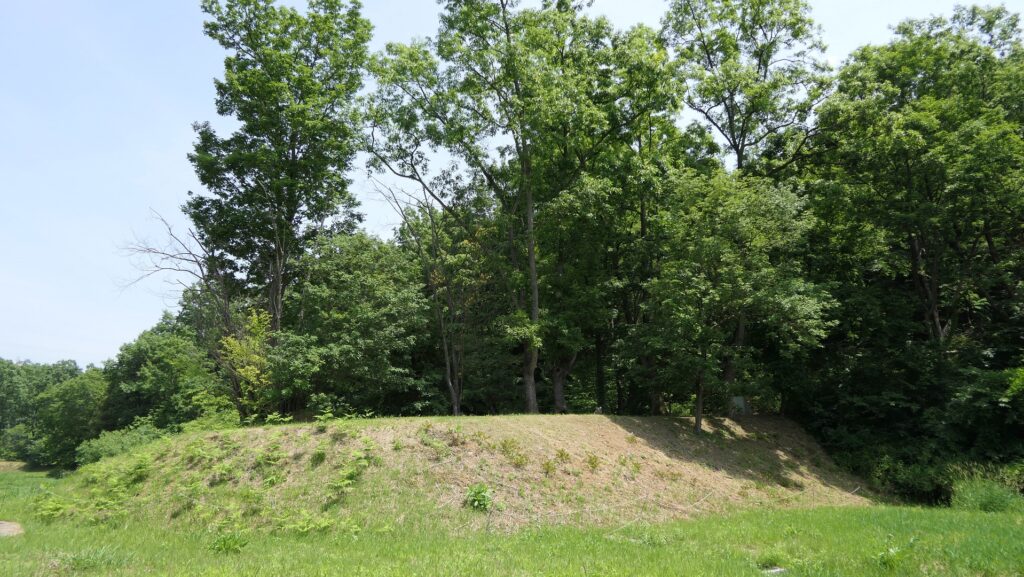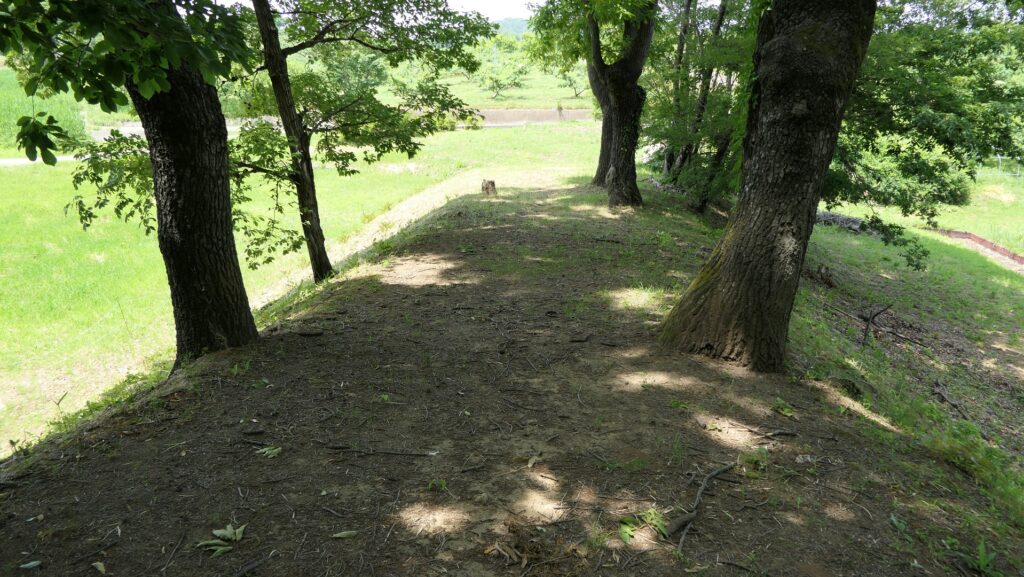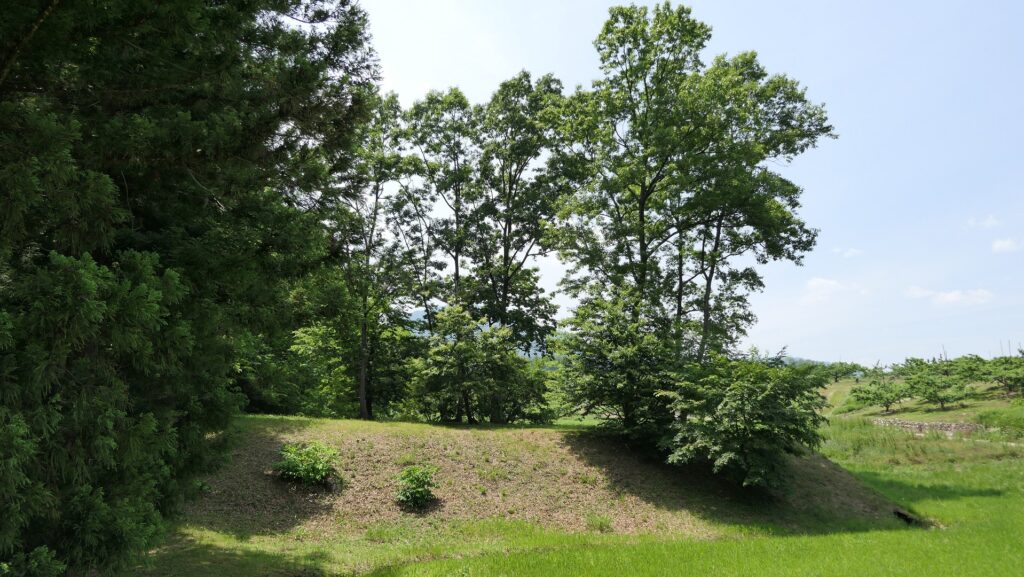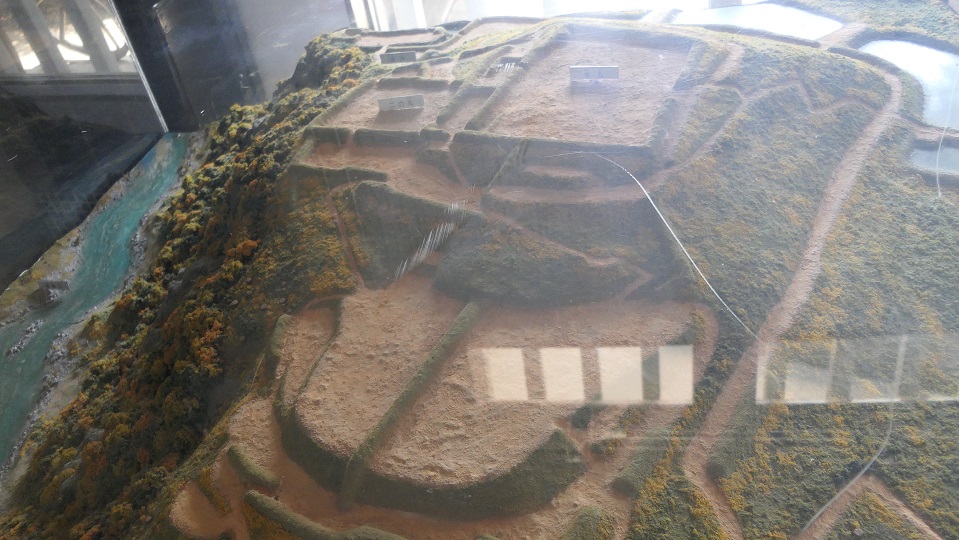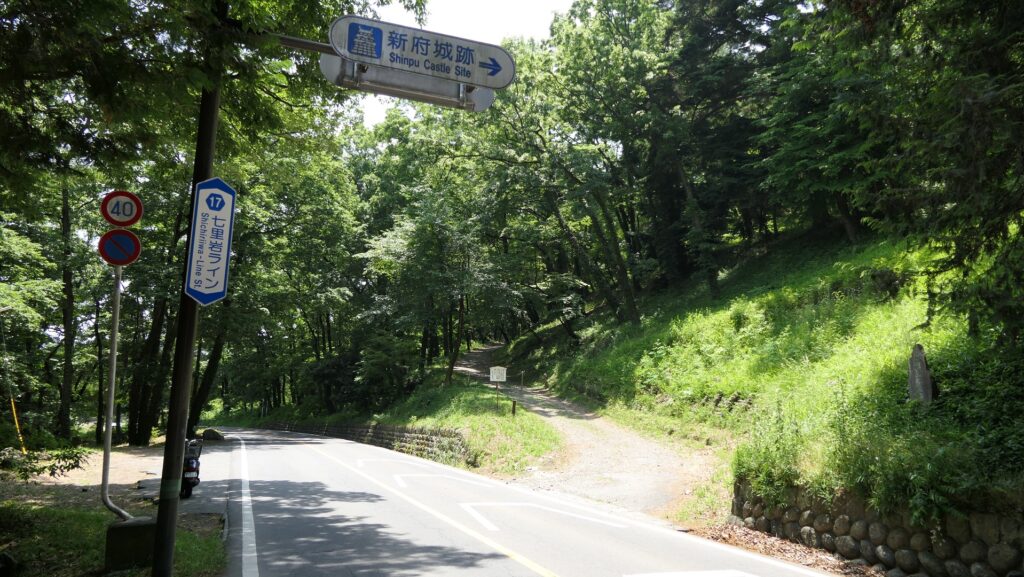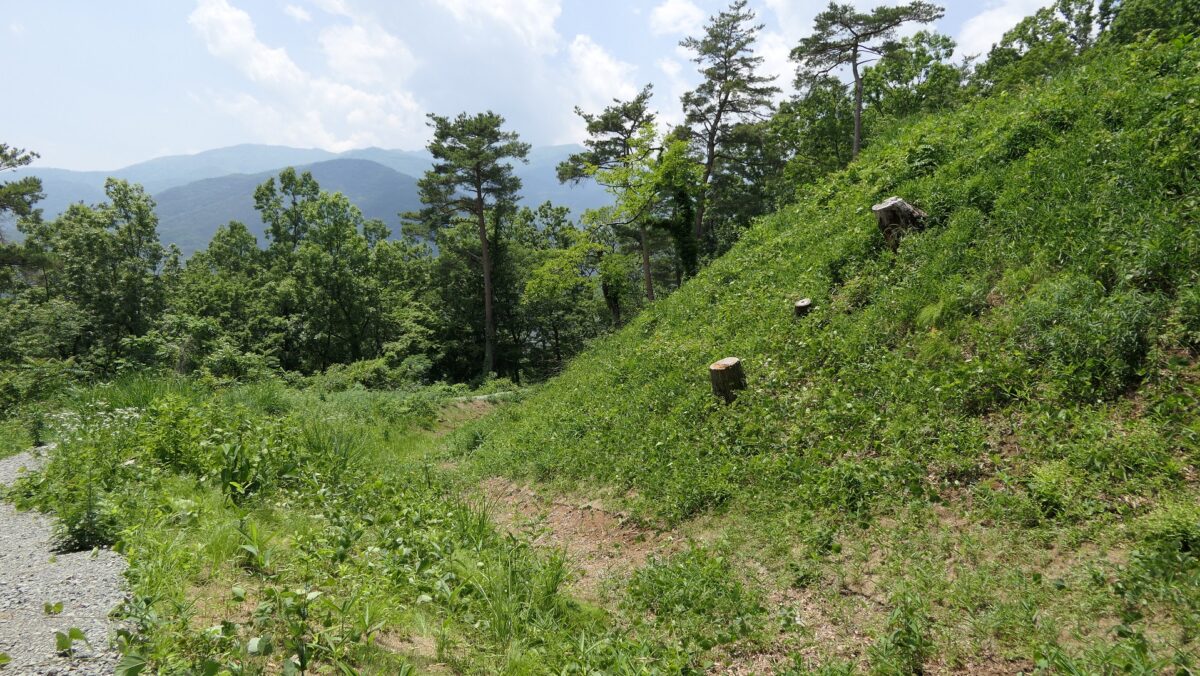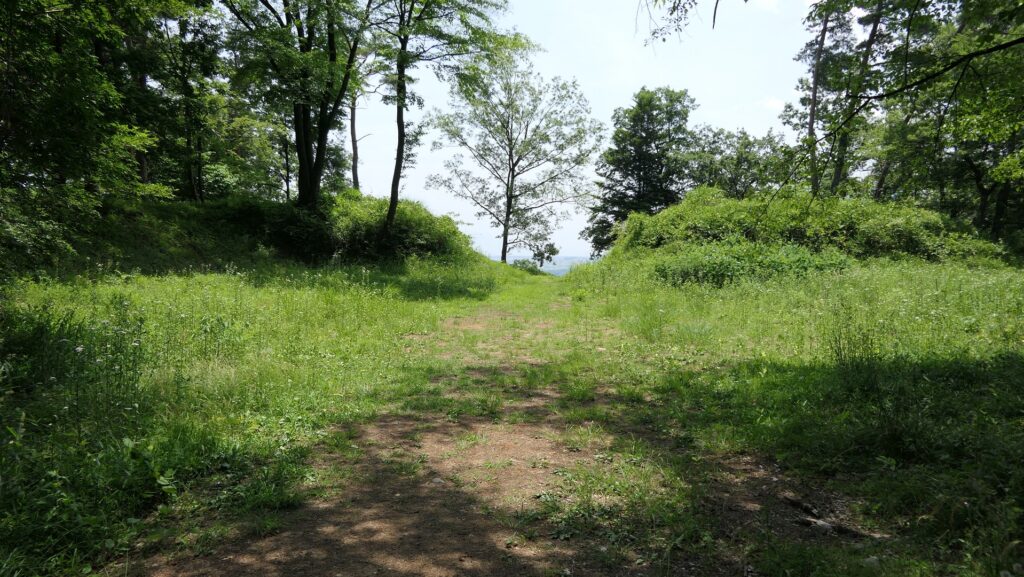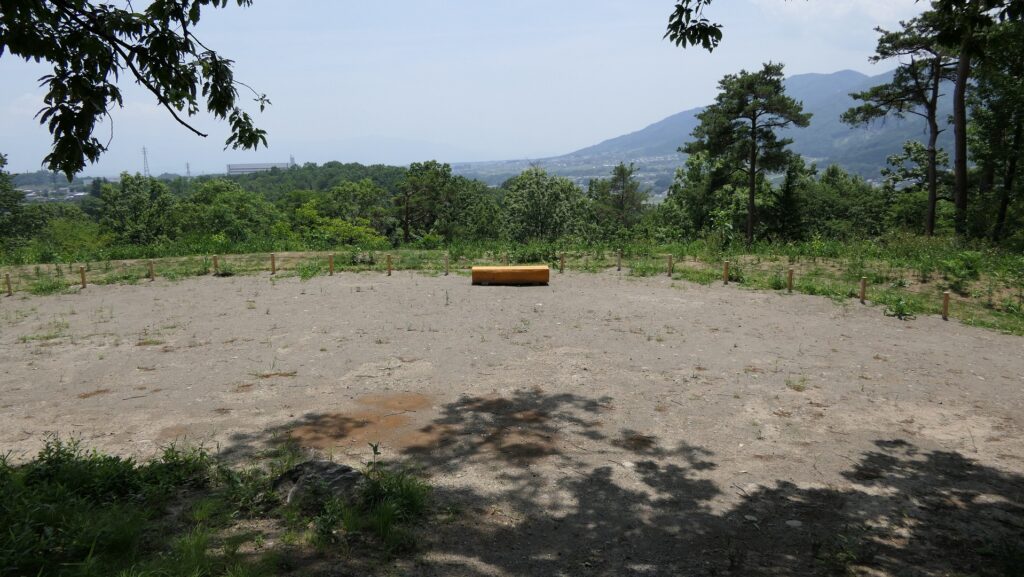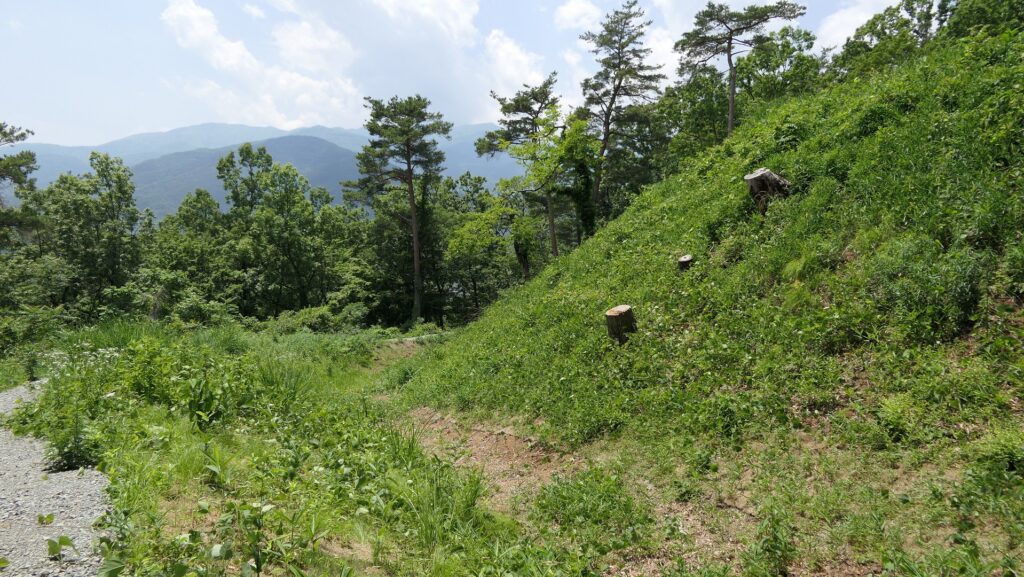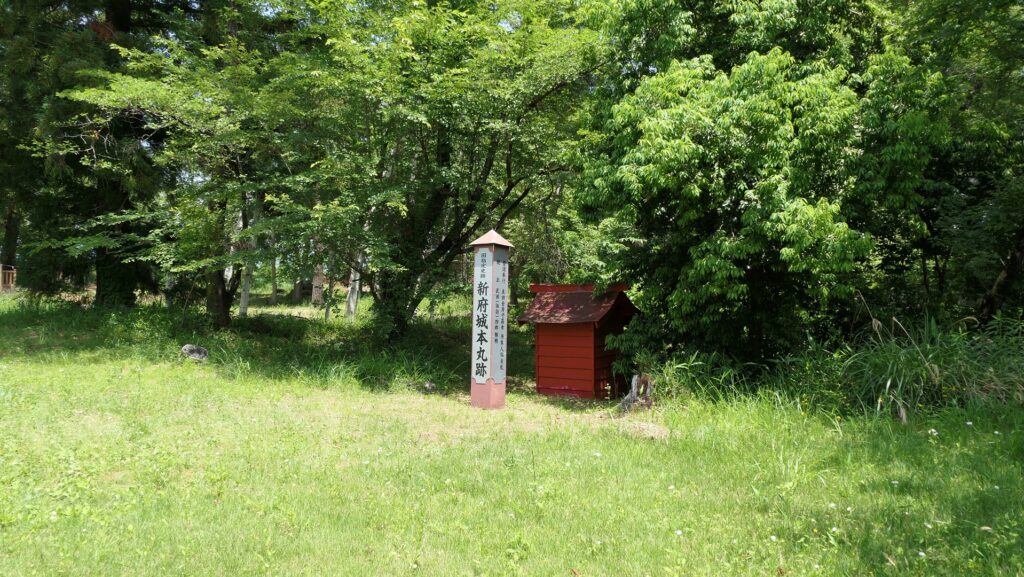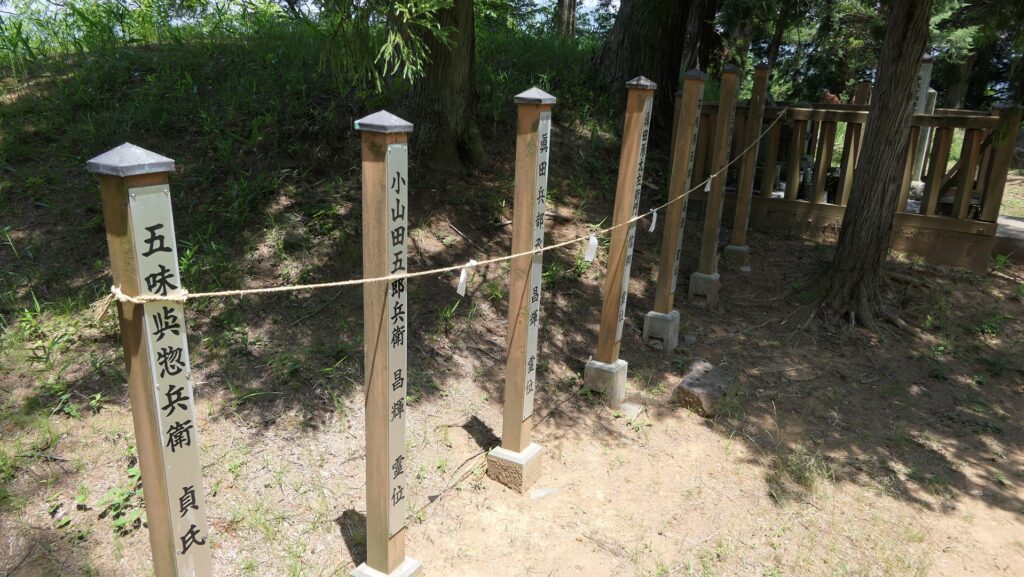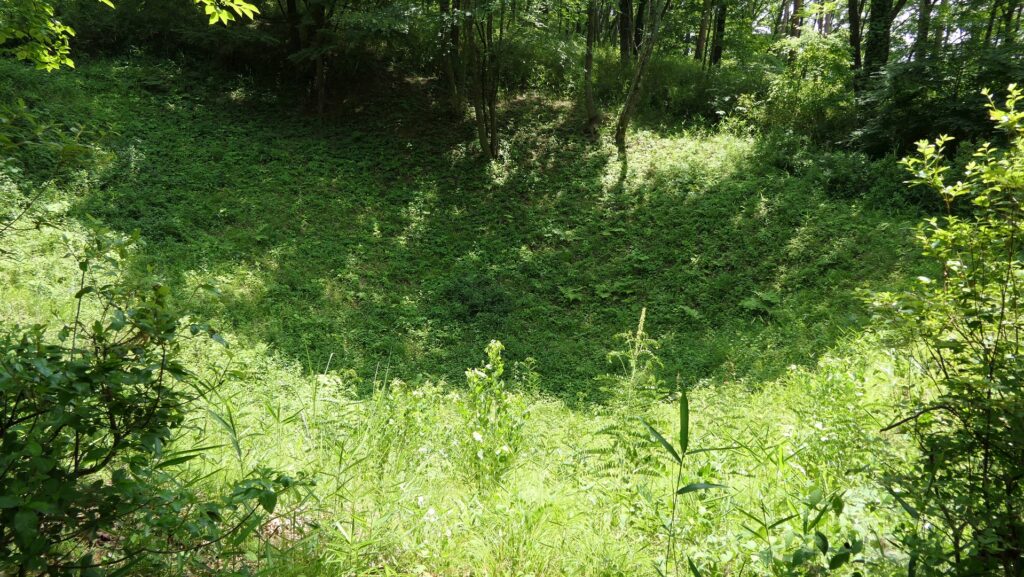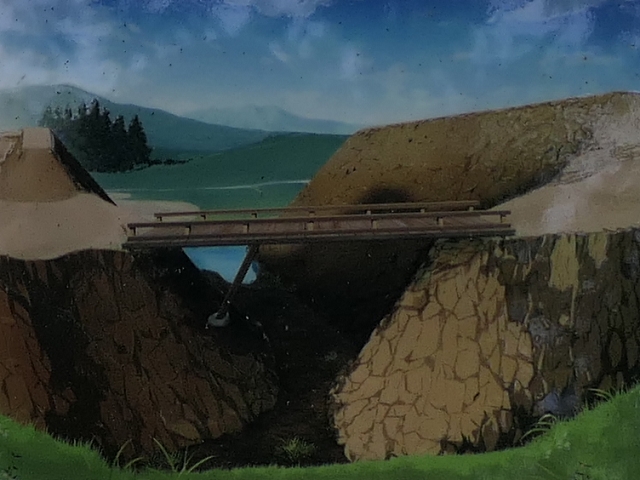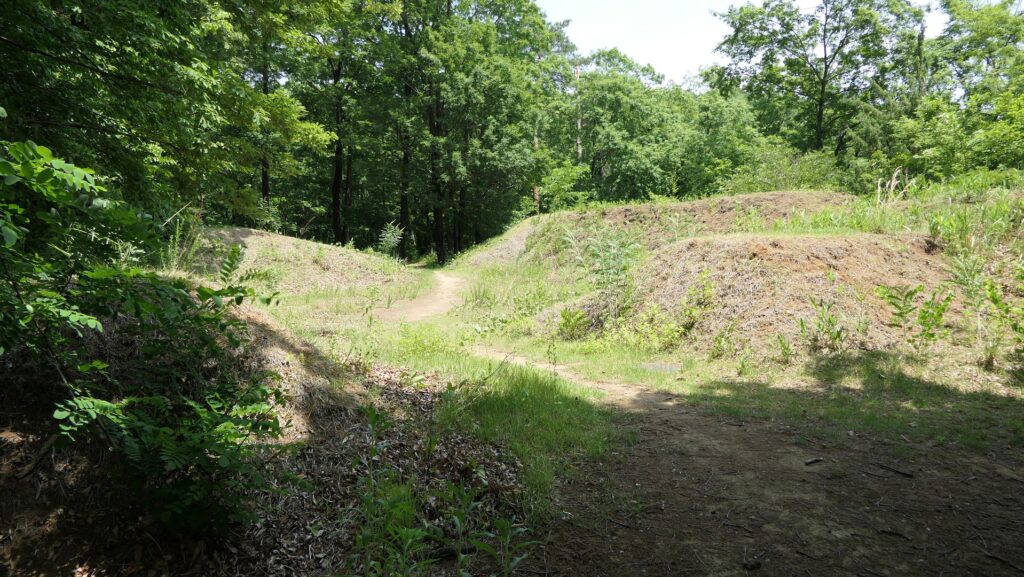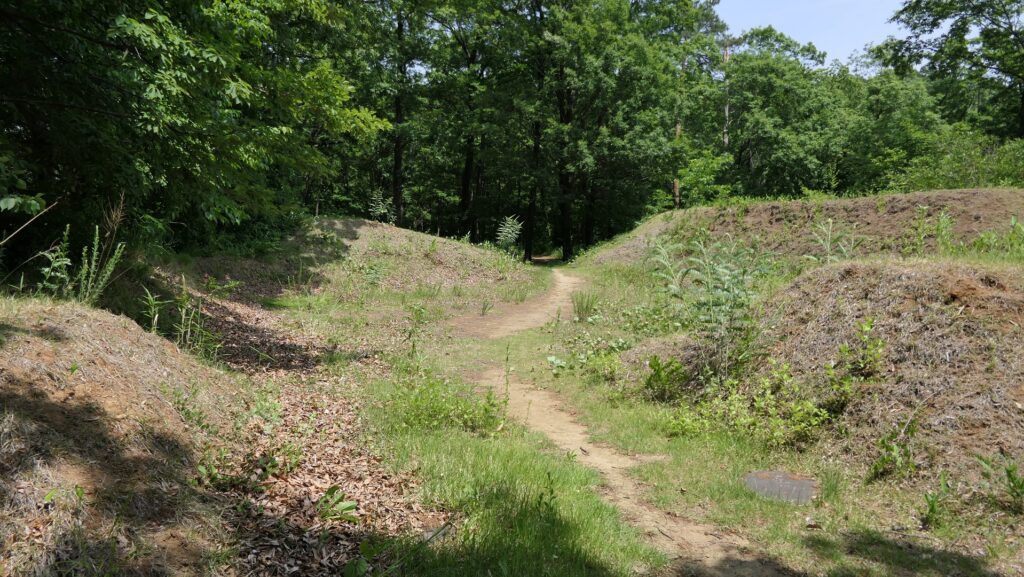Location and History
Castle for governing Ina District
Takato Castle was located in Shinano Province (what is now Nagano Prefecture). The Province was very large, so people often considered it as a group of districts. Ina District was the southern part of the province with a long valley terrain from the north to the south sandwiched by mountains. That’s why people also often call the district the Ina Valley. The valley connected the center of the province such as Suwa District and other provinces in the south such as Mikawa Province. That means Ina District was very important for transportation and governance. Takato Castle was on the edge of the mountains on the east of the valley, which was a good location to govern the district.
The ranges of Shinano Province and Ina District (the highlighted part) The relief map around the castleImproved by Takeda Clan
The Takato Clan, a local warlord first lived in Takato Castle in the first 16th Century during the Sengoku Period. In 1545, The Takeda Clan of Kai Province from the east capture the castle in the process of invading Shinano Province. Since then, The Takeda Clan sent their relatives as the lords of the castle, such as Katsuyori Takeda who became the last lord of the clan later. They improved the castle during their governance.

The foundation of castle was built using only soil. The edge of the mountains where the castle was located was surrounded by the Mibu and Fujisawa Rivers in the north, south and west. The mountains in the east were visible through the Back Gate. The Main Gate was at the western side of the castle, facing a steep slope. In addition, the castle was protected by tripled moats. The Main Enclosure was inside the Inner Moat, the Second Enclosure was inside the Middle Moat, and the Third Enclosure was inside the Outer Moat.
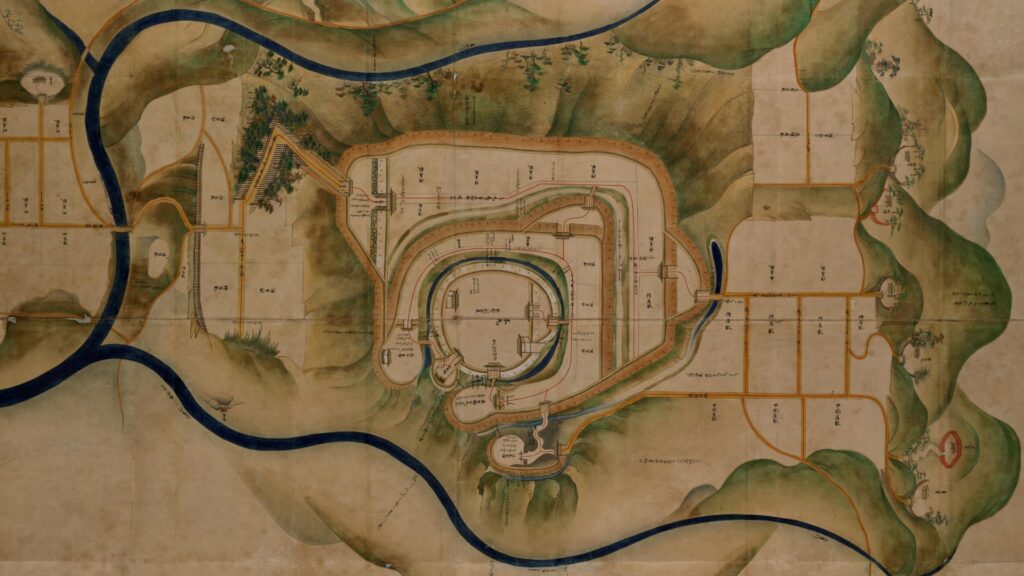
Battle of Takato Castle happens
In 1582, the Battle of Takato Castle between the Takeda Clan and the Oda Clan happened. Nobunaga Oda, unifying the whole country sent his son, Nobutada Oda with about 50,000 soldiers to Takeda’s territory. On the other hand, Morinobu Nishina, Katsuyori’s little brother was in the castle with only 3,000 defenders. Katsuyori, who was at Shinpu Castle about 70km east of Takato Castle, tried to help his brother, but couldn’t. Because most of his vassals betrayed or escaped before the Takeda Clan was defeated. Morinobu didn’t surrender and had to fight with Oda without help. Nobutada himself instructed his troops and charged into both gates of the castle, while the defenders including women fought a desperate defensive battle. However, they were outnumbered, and the castle finally fell in one day. This battle is regarded as the only resistance during the Oda’s invasion into Takeda’s territory.
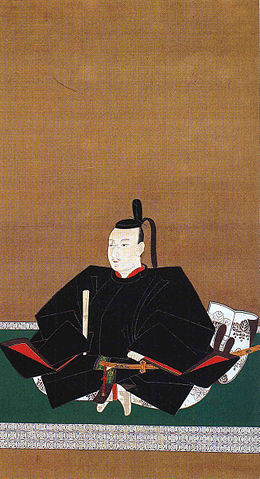
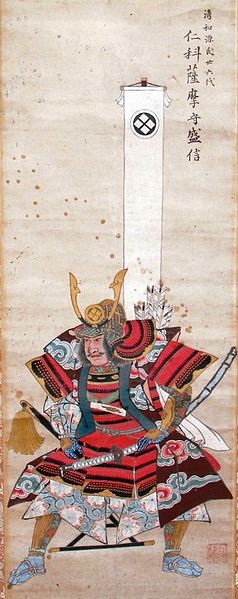
Maintained by Takato Domain
There was confusion after Nobunaga’s sudden death, a former Takeda’s retainer, the Hoshina Clan got Takato Castle and became the first lord of the Takato Domain in the Edo Period. The castle also became the government building of the domain. The castle for the domain followed the layout of Takeda’s period, but some turrets and plaster walls were built as a castle in the Early Modern Times. The Hoshina Clan accepted the second Shogun’s son named Masayuki as their successor. He also became a senior vassal of the Tokugawa Shogunate and contributed the stabilization of its governance. He was lastly promoted to the lord of Wakamatsu Castle at Aizu Domain. Takato Castle and Takato Domain were followed by the Torii Clan and finally the Naito Clan. The Naito Clan governed them for a long time between 1691 and 1871.


